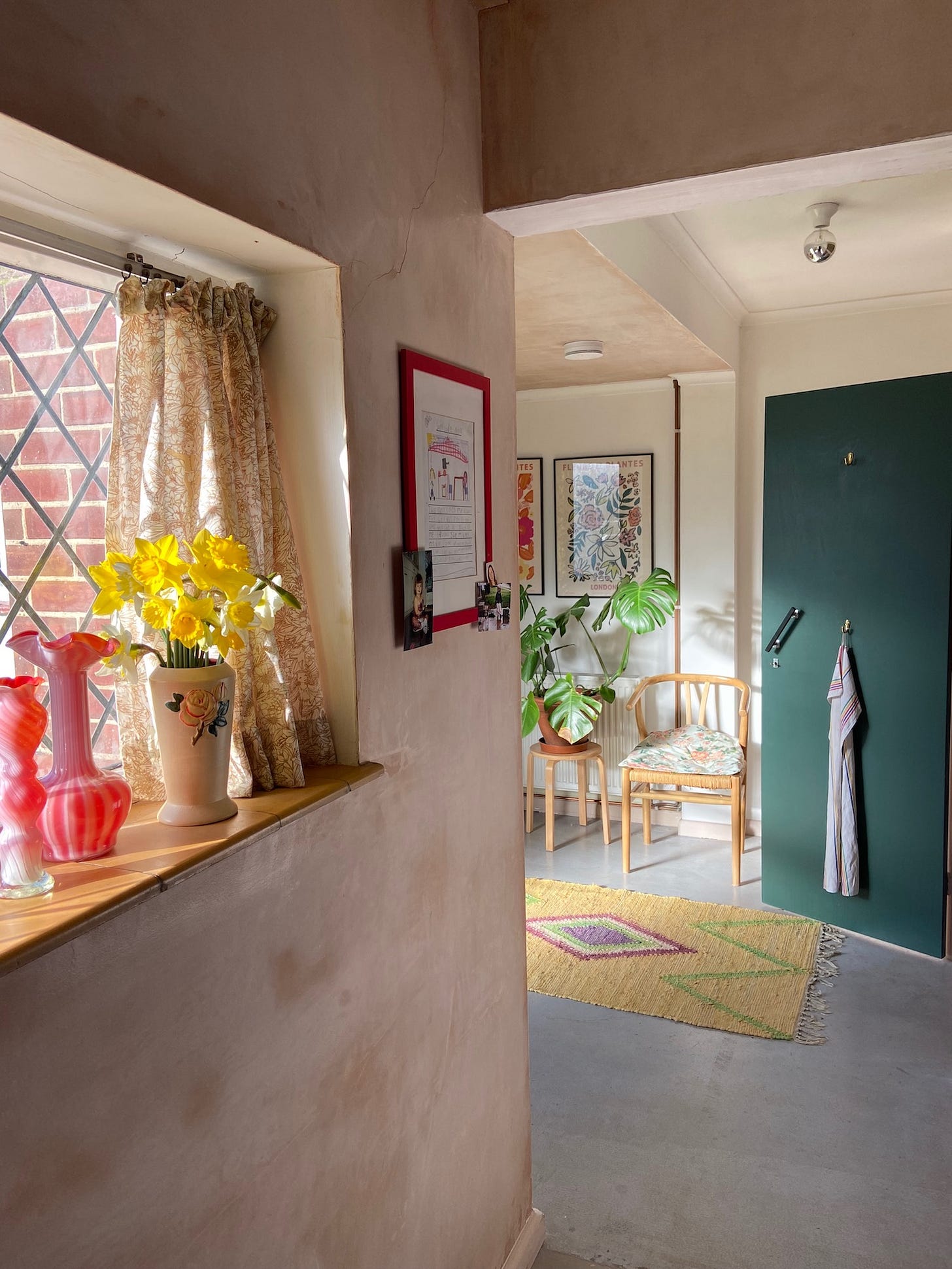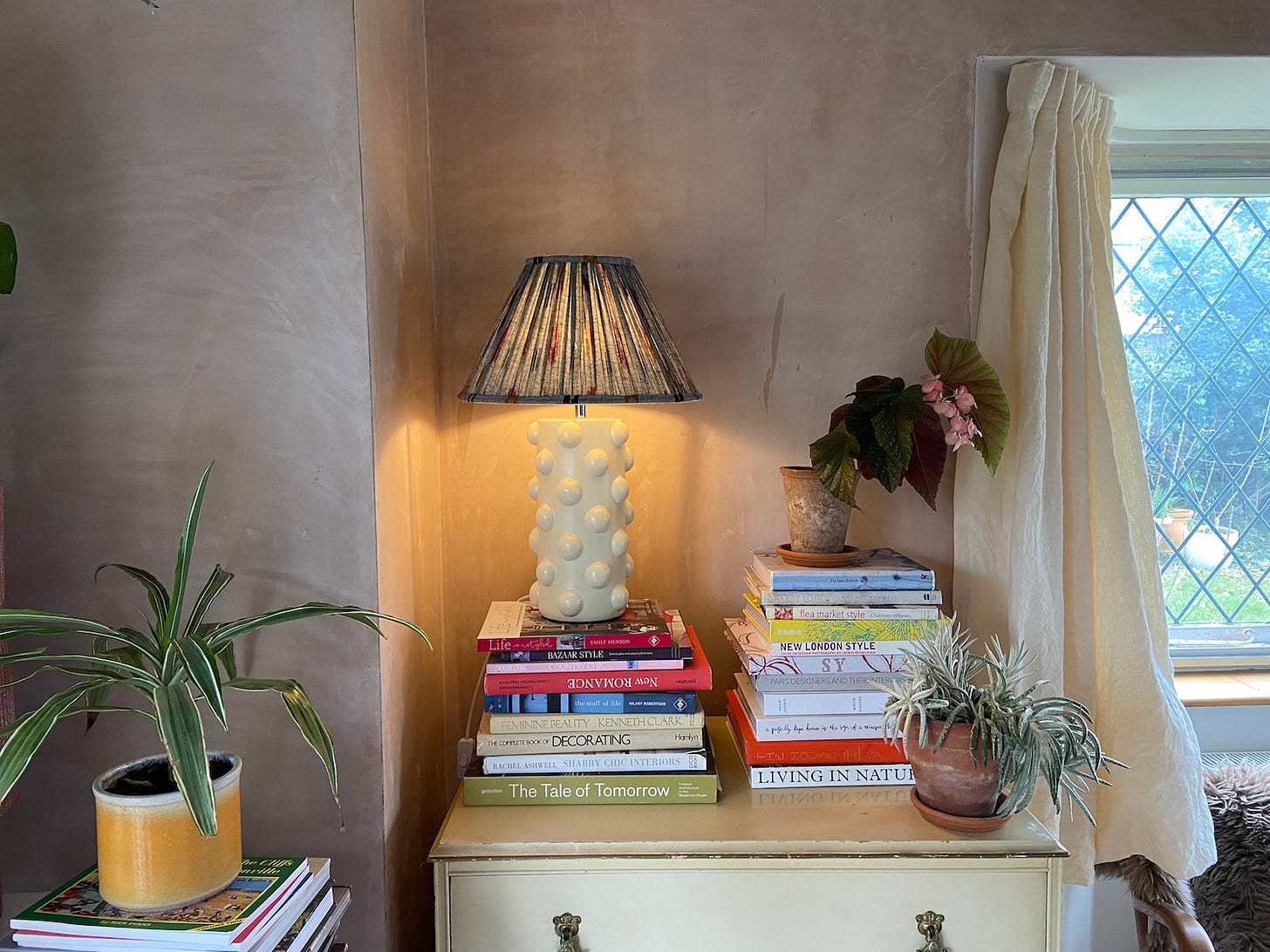I’ve borrowed today’s title from the tagline of my 3rd book Life Unstyled because 15 years since starting the original Life Unstyled blog and eight years since writing the book by the same name, I still believe it to be one of the most valuable things to remember when decorating a home. In a previous newsletter I mentioned contemplating writing this post and it stirred a lot of curiosity from readers, so here we are. As always, baring my own imperfections for the good of the interiors loving public :)
You know that feeling when you buy something brand new - a handbag, a coffee table, a pair of shoes, a sofa, and it feels delicious for a day, a week if you’re lucky? It’s so nice. You luxuriate in the newness. Maybe you saved up for it and with it finally in your possession you’re happy and proud and feeling f**king fantastic!
But then you get a pen mark inside the handbag, the table gets a water ring because someone didn’t use a coaster, the shoes get scuffed, and the sofa gets a stain. And it’s infuriating. And upsetting. And yes you know there are terrible things happening in the world and this is insignificant by comparison, but still. It sucks. They were so perfect, clean, unblemished, fresh. And then you messed them up. It’s why your granny used to have clear plastic covers over the sofa and why some people only bring out the ‘good china’ once a year. No-one wants to mess things up, long-term perfection is the goal.
But it is also deeply unrealistic and can cause undue stress on your home life.
The funny thing is, it’s often once those things - whether it’s a pair of trainers/sneakers or an armchair - start to look a bit lived in, that they feel well, alive. Like they have character.
At least that’s how I feel. This is why I prefer pre-loved and gently worn for almost anything (except shoes - I’d prefer not to share someone’s old foot fungus thanks). A secondhand chest of drawers might already have a few small scratches, so I won’t feel as bad when I accidentally scrape my ring on it and add another.
I know not everyone agrees. In fact when I posted this video about normalising ordinary and imperfect things I had a few comments from people saying I was shaming anyone who liked to have nice things (you really can’t win). I also wrote about it here in case you missed it. But I know there are a lot of people who struggle with the comparison game and seeing other peoples’ ‘perfect’ lives and ‘perfect’ homes makes them feel bad. I regularly fall into this trap and it makes me feel terrible!
In designing my current home I have veered toward finishes that can’t be messed up because they’re already a bit messy. Walls with texture and patina, concrete floors with lots of ‘mistakes’, a mishmash of secondhand furniture. It allows me to be easier on myself and less precious. Obviously I also enjoy the way those finishes look and I appreciate it’s not everyone’s taste but the message is the same no matter your style. Really, what embracing imperfection does is allows you to actually live, instead of always being careful because it’s bloody hard work to always be on your best behaviour at home.
Not to say I don’t like nice things nor that I advocate being careless with things you’ve worked hard to buy, but there has to be a boundary where we say, ok I can live with this or even, I love this: chipped mug/fraying curtain/cracked picture frame/uneven wall that’s been patched many times.
As with most things, there is a line that you won’t cross, but my line will be different to yours. For example, where the builder plastered the walls in the living room, the metal beading on the corner joins shows through a little bit. This doesn’t bother me. The whole vibe in the room is raw so it works. But for someone else it might be a problem. The same with the drippy marks in the plaster work - I think it adds character, but it will really bother someone else. (Although there is one extra visible drippy bit in the image below that does bother me, but not enough to paint all the walls - I live with it because it’s better than the alternative of losing all the plaster walls. And eventually there will be a tall bookcase here to cover it up).
The Japanese concept of wabi sabi is well documented but it bears repeating and is certainly worth remembering when embarking on a renovation or just decorating over time. Or just being alive in the world.
I particularly enjoy this description from Wabi Sabi: The Japanese Art of Impermanence by Andrew Juniper:
Taken from the Japanese words wabi, which translates to less is more, and sabi, which means attentive melancholy, wabi sabi refers to an awareness of the transient nature of earthly things and a corresponding pleasure in the things that bear the mark of this impermanence.
Isn’t that lovely? The transient nature of earthly things! That’s exactly it. I’ve written many times about how I believe a home is never done (including a section in Life Unstyled the book) and this phrase perfectly sums up why. Things change, items get broken or damaged and worn over time and once we embrace this constant change, it can be liberating.
In terms of interiors, that quote says it all. It also explains why I’ve never been a fan of the concept of a forever home - none of us know what our futures hold, so how can we talk about forever? It’s stifling.
One designer who has made a career and a business out of embracing imperfection is Australian stylist turned homeware designer Sibella Court. This image of her newly built kitchen is testament to her dedication to embracing imperfection by making a brand new kitchen look like it’s been there for decades, due to her stash of old timber collected over time. Also this one of her studio with what looks like unfinished birch ply walls, and lastly this one of one of the wallpapers she designed, where you can see the imperfections and brush strokes in the artwork.
Sitting here at my little table I can see at least three imperfect things that I can’t live with long term - rotting window frames, a large crack in the plaster where a steel beam was put in and poorly finished (by the original builder who quit) and linen curtains that I’ve started to make and have even hung, but need to be properly hemmed. For me these are a few of the imperfections that cross that boundary I mentioned. They’re on a to-do list for sure. I don’t want to live with them long-term but for now I make do until time/funds allow.









This was so wonderful and warm to read. We’ve loved buying second hand, it forces me to decide if I really like something, instead of almost liking something on default because so-and-so has it, I can purchase the exact one, and see how they’ve styled it. My credit card is also really chuffed.
I agree 💛